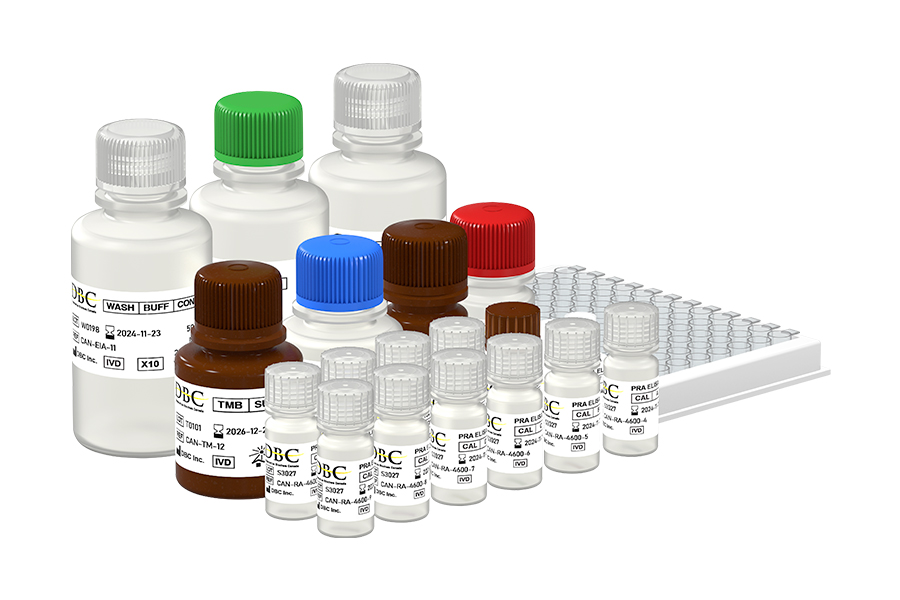
- CAN:

- EU:


- USA: For Research Use Only. Not For Use In Diagnostic Procedures.
Prior to testing plasma samples with the PRA ELISA, a specimen pre-treatment step is required. First, a protease inhibitor (PMSF) is added to the sample to prevent the degradation of angiotensin-I. Next, the generation buffer is added to bring the pH of the sample to approximately 6.0. The plasma sample is then pipetted into two aliquots. One aliquot is incubated at 0°C (ice bath) and the other is incubated at 37°C. Angiotensin-I will be generated by plasma renin in the fraction incubated at 37°C.
The PRA ELISA is a competitive immunoassay. In the first incubation step, competition occurs between angiotensin-I present in calibrators, controls, specimen samples and an angiotensin-I-biotin conjugate (biotin conjugate) for a limited number of anti-angiotensin-I antibody binding sites on the microplate wells. During this incubation, protease inhibitors are present to prevent the degradation of angiotensin-I into smaller peptides. In the second incubation step, streptavidin-HRP conjugate is added, which binds specifically to any bound biotin conjugate. Unbound streptavidin HRP conjugate is removed by a washing step. Next, the TMB substrate (enzyme substrate) is added which reacts with HRP to form a blue coloured product that is inversely proportional to the amount of angiotensin-I present. The enzymatic reaction is terminated by the addition of the stopping solution, converting the blue colour to a yellow colour. The absorbance is measured on a microplate reader at 450 nm. A set of calibrators is used to plot a calibrator curve from which the concentration of angiotensin-I in specimen samples and controls can be directly read.
The plasma renin activity concentration in the plasma sample is calculated from the angiotensin-I concentration in the 0°C and 37°C aliquots and the generation time used. The plasma renin activity results are expressed in terms of the mass of angiotensin-I generated per volume of human plasma per unit of time (ng/mL/h).
